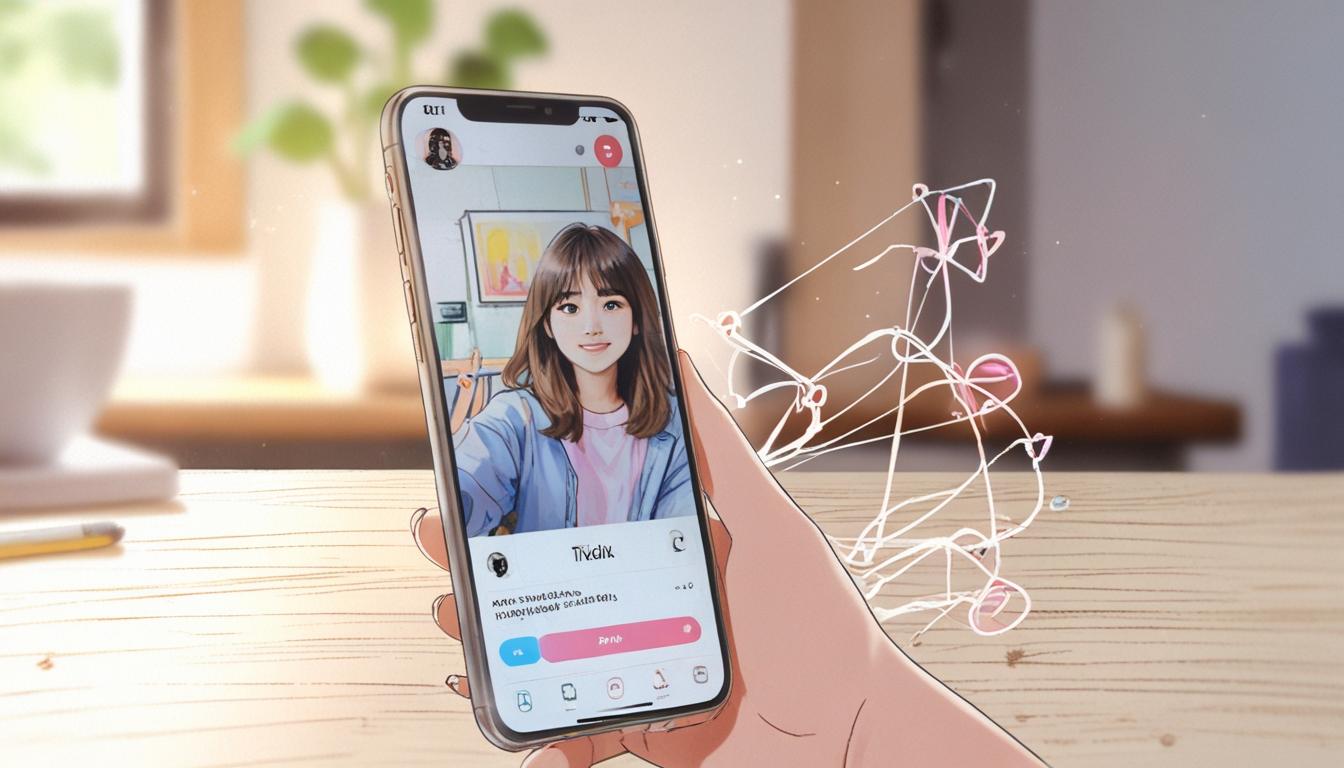TikTok’s new AI Alive feature transforms still images into animated videos within Stories, empowering creators with dynamic tools while embedding AI-generated labels and content moderation to ensure authenticity amid rising concerns over deepfake misuse.
TikTok has introduced a groundbreaking feature named AI Alive, designed to elevate the creative possibilities for users by transforming static images into dynamic animated short-form videos within TikTok Stories. This new tool is accessible exclusively through TikTok’s story camera and includes a suite of editing tools that empower creators to infuse movement, atmospheric effects, and sound into their still photos. This is a part of TikTok’s ongoing efforts to democratise content creation, enabling users of all skill levels to produce immersive and visually compelling narratives right from their devices.
By simply tapping the story camera and selecting a photo, users can utilise the AI Alive icon to start crafting their animated stories. Once shared, these creations have the potential to appear on various feeds, including the popular ‘For You’ and ‘Following’ feeds, or directly on a creator’s profile. The platform has expressed enthusiasm over the feature, stating its intention to inspire creativity within the TikTok community and enhance storytelling with authentic moments.
In light of increasing concerns about content authenticity, TikTok has implemented safety measures to ensure transparency. It has promised that all content generated using AI Alive will carry an AI-generated label alongside embedded metadata, adhering to standards established by the Coalition for Content Provenance and Authenticity (C2PA). Furthermore, the platform plans to conduct multiple moderation rounds on uploaded photos and final videos before they go live.
This announcement aligns TikTok with a broader trend in the tech industry, where platforms are harnessing artificial intelligence to enrich user experiences. Recent developments across major digital platforms illustrate this trend; for example, Netflix has revamped its interface to include a conversational search tool powered by ChatGPT, aimed at improving content discovery. Similarly, Instagram has implemented AI measures to monitor age verification, enhancing safety for its younger users.
The potential for AI technology in the creative sector is expanding rapidly, particularly through innovations from ByteDance, TikTok’s parent company. In addition to AI Alive, ByteDance has launched ‘X-Portrait 2,’ an advanced AI system that can not only animate photos realistically but also recreate iconic film scenes. This technology focuses on capturing subtle facial expressions and emotional depth, pushing the boundaries of how we interact with digital imagery.
However, such advancements are not without controversy. Concerns about misuse for creating deepfakes and misinformation loom large, especially given the emotional weight that might accompany animated portraits of deceased relatives. Users have begun applying TikTok’s ‘Photo Animation’ feature to create living memories of lost loved ones, with thousands of videos surfacing online. This highlights how AI can elicit powerful emotional responses and foster supportive interactions within communities.
While technologies like MyHeritage’s Deep Nostalgia, which animates old photos, evoke a sense of nostalgia and emotional connection, they also raise critical questions regarding the ethical implications of resurrecting memories. Users often share their touching experiences on social media, revealing both joy and sorrow as they animate portraits of their dear ones.
As platforms like TikTok continue to innovate and integrate AI-driven features, the conversation regarding user security, content authenticity, and the implications of emotional engagement remains vital. The ongoing journey of AI in digital storytelling invites users to explore creative avenues while navigating the responsibilities that come with such powerful tools.
Reference Map
- Paragraphs 1, 2, 4
- Paragraph 3
- Paragraph 5
- Paragraph 6
- Paragraph 7
- Paragraph 8
Source: Noah Wire Services
- https://www.marketing-interactive.com/tiktok-new-ai-feature-turns-static-photos-into-animated-stories – Please view link – unable to able to access data
- https://support.tiktok.com/en/using-tiktok/creating-videos/ai-generated-content – TikTok’s Help Center provides detailed information on AI-generated content, including definitions, requirements for posting, labeling, and prohibited content. It emphasizes the importance of transparency and safety, requiring creators to label content that is entirely or significantly edited by AI. The platform also outlines the process for reporting posts that violate community guidelines related to AI-generated content.
- https://www.newsbytesapp.com/news/science/bytedance-s-x-portrait-2-ai-recreates-realistic-movie-scenes-with-photos/story – ByteDance, the parent company of TikTok, has unveiled ‘X-Portrait 2,’ an AI system capable of transforming static photos into realistic video performances. This technology can recreate iconic movie scenes with stunning realism, capturing subtle facial expressions and emotional depth. While it offers innovative possibilities for content creation, concerns about potential misuse for deepfakes and digital misinformation are also highlighted.
- https://www.upworthy.com/people-are-having-powerful-reactions-to-seeing-their-relatives-come-back-to-life-through-a-new-app – The article discusses the ‘MyHeritage Deep Nostalgia’ app, which uses deepfake technology to animate static photos, making subjects smile, blink, and turn their heads. Users have shared emotional reactions, especially when animating photos of deceased relatives, leading to viral trends on platforms like TikTok where people share their experiences of seeing their family members come to life.
- https://www.businessinsider.in/thelife/news/people-are-using-tiktoks-photo-animation-effect-to-remember-deceased-loved-ones/articleshow/84252302.cms – TikTok users are utilizing the ‘Photo Animation’ effect to animate photos of deceased family and friends, making them smile, blink, and move their eyes. This feature has been applied to over 80,000 videos, sparking trends where users share their experiences of reanimating photos of their loved ones, leading to emotional and supportive interactions in the comment sections.
- https://curtonews.com/en/artificial-intelligence/bytedance-revolutionizes-animation-with-ai-x-portrait-2-transforms-photos-into-realistic-videos/ – ByteDance’s ‘X-Portrait 2’ is an AI system that transforms static images into expressive animated performances by mapping facial movements onto reference videos. It can transfer subtle facial expressions and complex movements with realism and fluidity, working on both realistic portraits and cartoon characters. This innovation opens up possibilities for animation, virtual agents, and visual effects, potentially integrating into platforms like TikTok.
- https://guardian.ng/news/how-to-bring-your-photo-to-life-virbo-ai-talking-photo/ – Wondershare Virbo is an AI-powered video editing tool that allows users to transform static photos into engaging, life-like videos. It offers features like AI-generated voices in multiple languages, realistic animations, and customizable templates. Virbo is suitable for both beginners and experienced videographers, providing a user-friendly interface to create captivating content without the need for extensive editing skills.
Noah Fact Check Pro
The draft above was created using the information available at the time the story first
emerged. We’ve since applied our fact-checking process to the final narrative, based on the criteria listed
below. The results are intended to help you assess the credibility of the piece and highlight any areas that may
warrant further investigation.
Freshness check
Score:
8
Notes:
The narrative discusses current trends and innovations in AI technology, particularly TikTok’s AI Alive feature. There is no indication that the content is recycled or outdated. However, the lack of specific dates for the feature’s launch or recent updates might suggest it is not the most recent news.
Quotes check
Score:
0
Notes:
There are no direct quotes provided in the narrative to verify.
Source reliability
Score:
8
Notes:
The narrative originates from Marketing Interactive, a reputable platform for marketing and technology news, which generally provides reliable information.
Plausability check
Score:
9
Notes:
The claims about AI advancements and their applications are plausible, aligning with current trends in the tech industry. However, the narrative’s focus on emotional responses and ethical implications adds a layer of subjective interpretation.
Overall assessment
Verdict (FAIL, OPEN, PASS): PASS
Confidence (LOW, MEDIUM, HIGH): HIGH
Summary:
The narrative is generally reliable, discussing current AI trends and innovations. While there are no direct quotes to verify, the information is plausible and aligns with industry developments. The freshness of the content is high, although specific launch dates are not mentioned. Overall, the narrative is credible and reflects current technological advancements.













